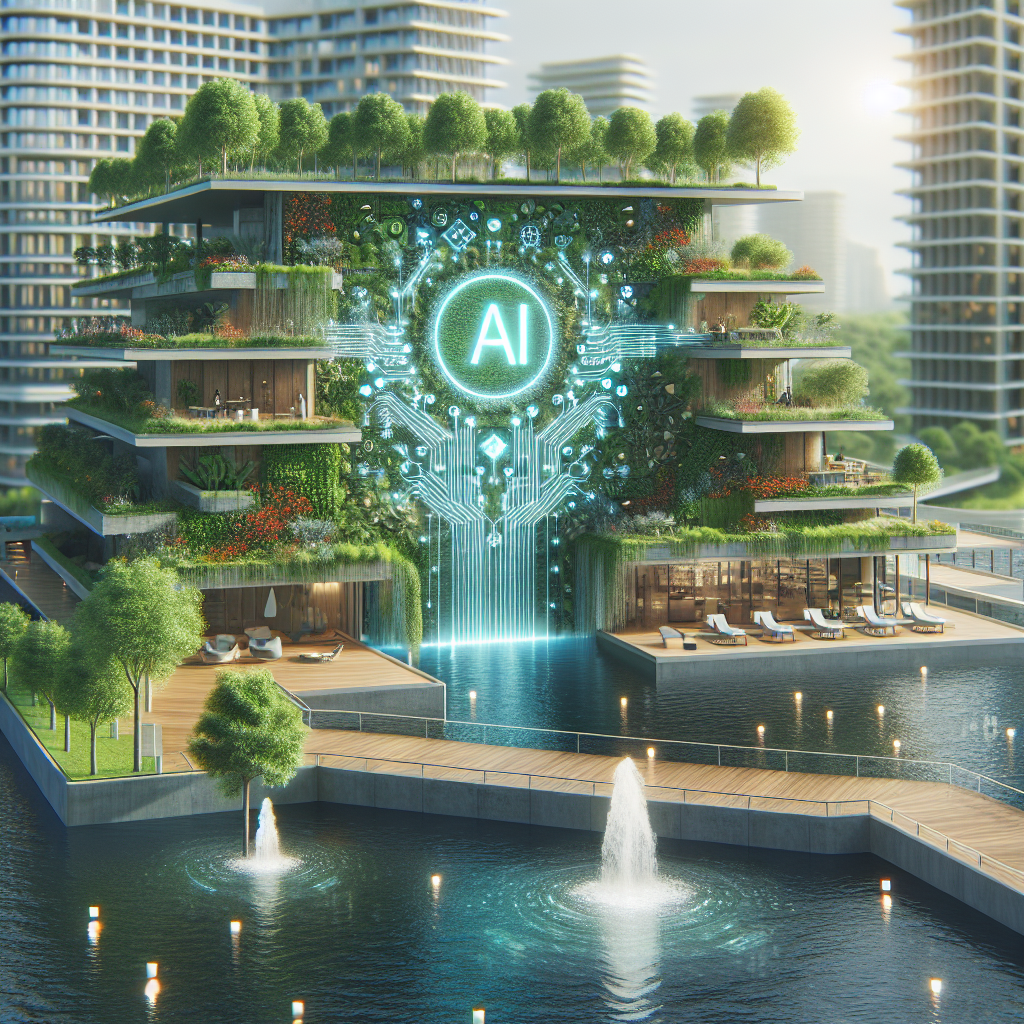AI-Enhanced Design for Biophilic Architecture
Biophilic architecture is a design concept that seeks to incorporate elements of nature into the built environment, with the goal of creating spaces that are both aesthetically pleasing and beneficial to human health and well-being. The use of artificial intelligence (AI) in the design process has the potential to further enhance the biophilic qualities of a building, by allowing designers to more effectively integrate natural elements and optimize the overall design for maximum impact.
AI can be used in a number of ways to enhance the biophilic qualities of a building. One of the key ways in which AI can be used is in the analysis of data related to the natural environment surrounding a building site. By analyzing factors such as sunlight exposure, wind patterns, and vegetation cover, AI can help designers to identify opportunities to maximize the use of natural light and ventilation, incorporate greenery into the design, and create outdoor spaces that are conducive to human health and well-being.
Another way in which AI can enhance biophilic architecture is through the use of generative design tools. Generative design is a process in which designers input a set of design parameters, and the AI algorithm generates a range of possible design solutions based on those parameters. By using generative design tools, designers can explore a wider range of design options and quickly iterate on different ideas, allowing them to more effectively create designs that incorporate biophilic elements.
AI can also be used to optimize the energy performance of a building, which is an important aspect of biophilic design. By analyzing data on energy usage patterns, building orientation, and climate conditions, AI can help designers to optimize the building envelope, HVAC systems, and other energy-related aspects of the design to minimize energy consumption and maximize the use of natural resources.
In addition to these technical aspects, AI can also be used to enhance the user experience of a biophilic building. For example, AI-powered sensors can be used to monitor indoor air quality, temperature, and lighting levels, and adjust these parameters in real-time to create a more comfortable and healthy indoor environment. AI can also be used to personalize the user experience, by analyzing data on user preferences and behavior to create spaces that are tailored to the needs and preferences of the occupants.
Overall, the use of AI in biophilic architecture has the potential to revolutionize the way we design and experience built environments, by allowing designers to create spaces that are not only aesthetically pleasing, but also promote human health and well-being in a sustainable way.
FAQs
Q: How does AI enhance the biophilic qualities of a building?
A: AI can enhance the biophilic qualities of a building in a number of ways, including analyzing data on the natural environment surrounding a building site, using generative design tools to explore a wider range of design options, optimizing the energy performance of a building, and enhancing the user experience through personalized design solutions.
Q: What are some examples of biophilic elements that can be incorporated into a building design?
A: Some examples of biophilic elements that can be incorporated into a building design include natural light and ventilation, greenery such as plants and living walls, outdoor spaces that promote connections to nature, and materials that mimic natural textures and patterns.
Q: How can AI help to optimize the energy performance of a biophilic building?
A: AI can help to optimize the energy performance of a biophilic building by analyzing data on energy usage patterns, building orientation, and climate conditions, and using this information to optimize the building envelope, HVAC systems, and other energy-related aspects of the design.
Q: How can AI be used to personalize the user experience of a biophilic building?
A: AI can be used to personalize the user experience of a biophilic building by analyzing data on user preferences and behavior, and using this information to create spaces that are tailored to the needs and preferences of the occupants. This can include adjusting indoor air quality, temperature, and lighting levels in real-time to create a more comfortable and healthy indoor environment.

